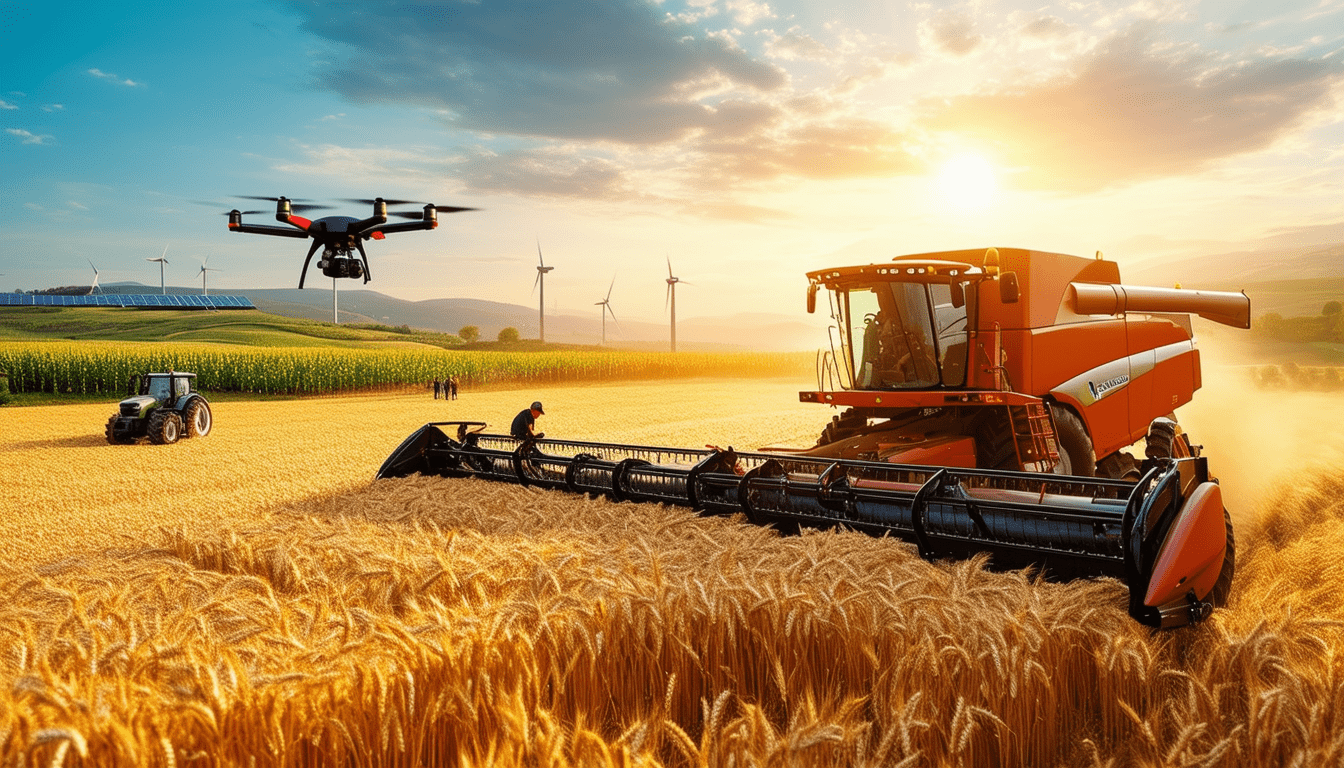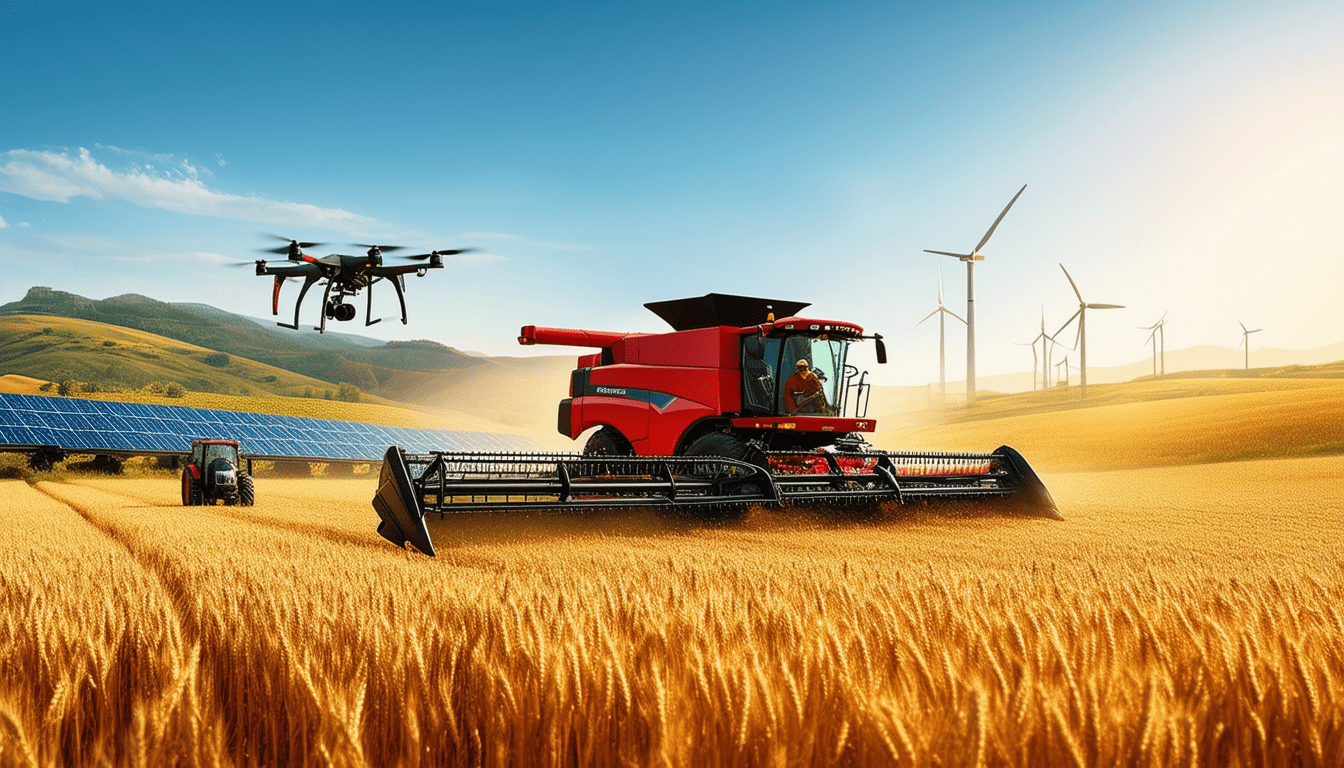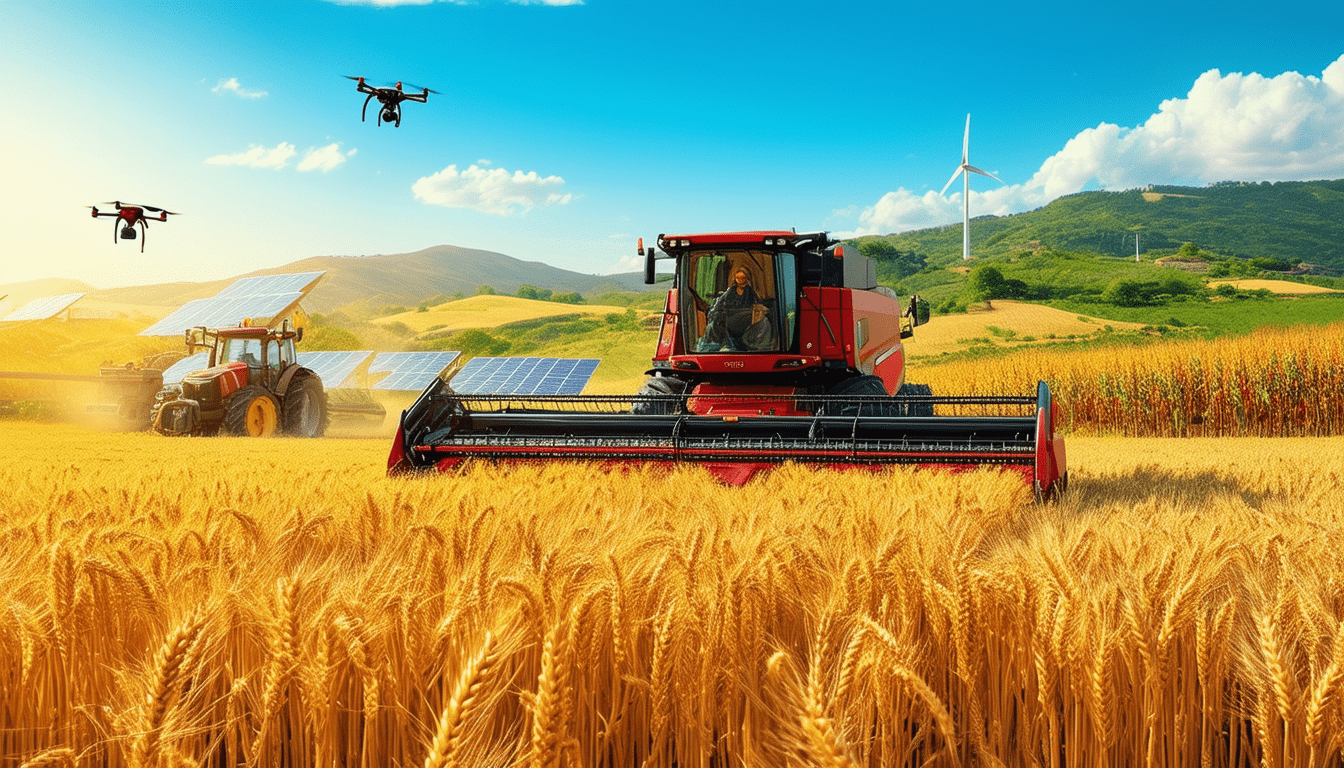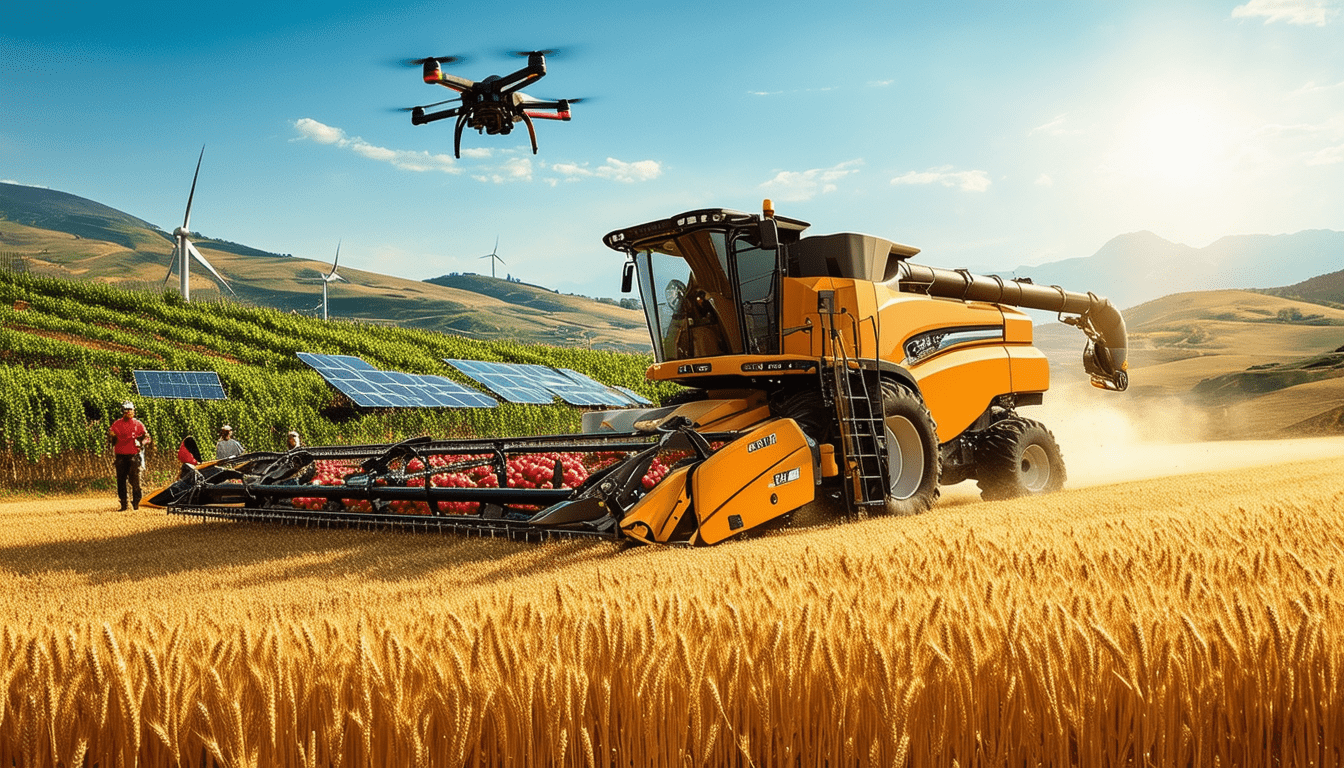Harvesting techniques: an overview of modern methods and practices
|
IN BRIEF
|
In the realm of agriculture, harvesting techniques play a pivotal role in determining the quality and efficiency of crop production. As farming continues to evolve, modern methods and practices have emerged, enhancing the way we collect and store various crops. These advancements not only focus on maximizing yield but also emphasize sustainability and minimal environmental impact. From manual harvesting to the use of sophisticated machinery, understanding these techniques is essential for farmers striving to remain competitive in today’s dynamic agricultural landscape. Unlocking the secrets of successful harvesting is crucial for ensuring food security and meeting the demands of a growing population.

Harvesting is a crucial phase in agriculture, encompassing a variety of methods and practices designed to gather crops efficiently while minimizing waste and preserving quality. As agricultural science evolves, modern harvesting techniques have been developed to maximize yield, sustain resources, and adapt to environmental challenges. This article explores the diverse methodologies, benefits, and implications of contemporary harvesting practices.
The Importance of Efficient Harvesting Techniques
Efficient harvesting techniques are vital for several reasons. First and foremost, they significantly impact the overall crop yield. Techniques that minimize damage during the harvesting process help maintain the quality and quantity of the produce. Additionally, adopting innovative harvesting methods can lead to improved economic outcomes for farmers, as reduced labor costs and increased efficiency often translate to higher profits. Lastly, the environmental aspects of harvesting cannot be ignored; sustainable practices contribute to the conservation of resources and the protection of ecosystems.
Manual and Mechanical Harvesting Methods
Harvesting can be broadly categorized into two methods: manual and mechanical. Manual harvesting involves hand-picking crops, a method used primarily for delicate fruits and vegetables. It allows for careful selection but can be labor-intensive and time-consuming. On the other hand, mechanical harvesting utilizes machinery to collect crops quickly and efficiently. Various types of machinery, such as combine harvesters and specialized fruit pickers, have been developed to improve the speed and reduce the labor required for harvesting operations. Understanding the benefits and limitations of each method is key for farmers to make informed decisions based on their specific crop types and operational needs.
Innovative Sustainable Harvesting Practices
Sustainable harvesting practices are gaining traction as the agriculture industry recognizes the necessity of balancing productivity with environmental responsibility. Key sustainable methods include crop rotation, agroforestry, and no-till farming. These practices not only improve soil health but also promote sustainable ecosystems. Integrated pest management (IPM) is another crucial aspect, employing biological pest control methods that reduce reliance on chemical pesticides. Utilizing these methods allows farmers to create a more resilient agricultural system that can withstand adverse conditions and changing climate patterns. For further information on these practices, check the resources here.
Tools and Equipment for Harvesting
The advancement of technology has led to the development of specialized tools and equipment that enhance the harvesting process. From traditional hand tools like sickles and scythes to state-of-the-art machinery such as automated harvesters, the choices available are extensive. These tools are designed to improve efficiency, reduce crop damage, and save labor costs. Investing in the right equipment can revolutionize a harvesting operation and increase the overall productivity of a farm. Detailed insights into the various harvesting tools can be found here.
Water Harvesting Techniques in Agriculture
Water is a critical resource in agriculture, and its availability significantly influences harvesting practices. Innovative water harvesting techniques play an essential role in ensuring that crops receive adequate moisture. Rainwater harvesting systems, drip irrigation, and contour farming are just a few methods used to collect and conserve water in agricultural settings. Such techniques not only aid crop growth but also ensure sustainability by reducing dependency on groundwater sources. The synergy between water conservation and harvesting methods is fundamental for sustainable agriculture.
Best Practice Harvesting Techniques
Implementing best practice harvesting techniques can reduce the risk of breakage and bruising during collection and storage. Techniques that focus on timing, such as monitoring crop maturity, are essential to ensure that crops are harvested at their peak, thus optimizing flavor and nutritional value. It is also important to train harvesters in proper handling methods to further decrease damage. These practices are essential in maintaining the viability of crops throughout the supply chain.
The Future of Harvesting Techniques
As agriculture continues to adapt to global changes, the future of harvesting looks bright. The integration of advanced technologies such as artificial intelligence and robotics promises to revolutionize how harvesting is conducted, making it more efficient and sustainable. There is a growing interest in research and development aimed at creating even greener solutions for crop collection, emphasizing the importance of ongoing innovation in the field. To learn more about the lifecycle of modern farming, check out the insightful resources available here.
Comparison of Harvesting Techniques
| Harvesting Technique | Description |
| Manual Harvesting | Handpicking of crops, beneficial for quality but labor-intensive. |
| Mechanical Harvesting | Use of machinery for faster collection, increases efficiency. |
| No-Till Farming | Minimizes soil disturbance, promotes soil health and moisture retention. |
| Agroforestry | Integrating trees with crops, enhances biodiversity and soil health. |
| Integrated Pest Management (IPM) | Combines biological, cultural, and chemical practices to control pests sustainably. |
| Cover Cropping | Planting crops during offseason to enrich soil and prevent erosion. |
| Best Practice Techniques | Formalized methods aimed at reducing crop damage during harvesting. |
| Rainwater Harvesting | Collecting rainwater for irrigation, promotes water conservation. |

In the contemporary agricultural landscape, effective harvesting techniques are crucial for optimizing production and ensuring sustainability. This article delves into the various methods of harvesting, integrating both traditional practices and innovative technologies. By understanding the importance of these techniques, farmers can enhance crop quality and maximize efficiency while minimizing environmental impact.
Understanding Modern Harvesting Methods
Modern harvesting techniques have evolved significantly, embracing both manual and mechanical methods. Manual harvesting, although labor-intensive, is still employed for delicate crops that require careful handling to prevent damage. On the other hand, the use of machinery, such as combine harvesters, has revolutionized the industry. These machines not only increase speed but also reduce labor costs, allowing farmers to harvest large areas in a short time frame. For more in-depth information on mechanical harvesting, you can visit here.
Sustainable Harvesting Practices
The integration of sustainability into harvesting methods is essential for long-term agricultural viability. Techniques such as crop rotation, agroforestry, and no-till farming not only promote soil health but also enhance biodiversity. Furthermore, integrated pest management (IPM) reduces reliance on synthetic chemicals, promoting a healthier ecosystem. Employing these sustainable practices leads to more resilient agricultural systems that can withstand the impacts of climate change. For additional insights on sustainable practices, refer to this resource.
Harvesting Tools and Equipment
The choice of tools and equipment plays an indispensable role in the efficiency of the harvesting process. From traditional hand tools like sickles and knives to advanced machinery designed for specific crops, the right tools can substantially impact the overall yield. Innovations in design and technology are continually being developed to enhance productivity while minimizing crop damage. For farmers looking to improve their harvesting techniques, understanding the available equipment and how to utilize it effectively is key.
The Importance of Timing in Harvesting
Timing is a critical factor in the harvesting process. Properly monitoring crop maturity ensures that produce is harvested at its peak quality. In modern agriculture, technology such as sensors and drones can assist in determining the optimal harvest time. This approach not only enhances crop quality but also maximizes profitability. The profound effect of timing on yield and quality underscores the need for farmers to invest in technologies that facilitate accurate assessments.
Innovative Water Harvesting Techniques
Water management is another integral aspect of sustainable agriculture, particularly concerning harvesting. Rainwater harvesting methods, including rooftop collection and ground trench systems, can significantly bolster water conservation efforts. Implementing these techniques not only supports crop irrigation but also improves resilience in regions prone to drought. To explore various rainwater harvesting methods in greater detail, check out this informative source.
Embracing Modernity in Agriculture
Modern harvesting techniques are imperative for enhancing agricultural productivity and sustainability. By combining traditional practices with cutting-edge technology, farmers can achieve a more efficient harvesting process while safeguarding the environment. As agricultural challenges continue to evolve, so must our approaches to harvesting, ensuring that we meet the needs of a growing population while preserving our vital natural resources.
- Manual Harvesting – Picking crops by hand; suitable for delicate fruits and vegetables.
- Mechanical Harvesting – Utilizing machinery for faster large-scale harvests, minimizing labor.
- Precision Harvesting – Leveraging technology (like drones) for targeted crop collection and monitoring.
- Cover Cropping – Using cover crops to improve soil health and manage weeds, enhancing harvesting conditions.
- No-Till Farming – Reducing soil disturbance to promote sustainability and improve crop yields at harvest.
- Agroforestry – Integrating trees and shrubs with crops to increase biodiversity and yield in harvesting.
- Integrated Pest Management (IPM) – Combining biological, cultural, and chemical practices to minimize crop loss during harvest.
- Timing and Monitoring – Employing field monitoring to determine the optimal time for harvest for maximum quality.

Overview of Harvesting Techniques
Modern harvesting techniques have evolved significantly, integrating advancements in technology and sustainable practices. This article explores various methods of harvesting, highlighting manual and mechanical approaches, the importance of timing, and innovative practices that minimize crop loss and environmental impact. Understanding these approaches is crucial for maximizing efficiency and ensuring long-term sustainability in agricultural practices.
Manual Harvesting Techniques
Manual harvesting refers to the practice of hand-picking crops, such as fruits, vegetables, and grains. This traditional method is labor-intensive but allows for greater care, significantly reducing the risk of damaging delicate produce. Essential tools used in manual harvesting can include simple hand tools like knives or sickles, which aid in the collection process.
One notable advantage of manual harvesting is its ability to selectively harvest only the ripe produce, ensuring quality and reducing waste. However, reliance on manual methods may not be feasible for large-scale operations due to labor costs and time constraints. As a result, modern farms often complement manual techniques with equipment innovation to enhance their harvesting capacities.
Mechanical Harvesting Methods
Mechanical harvesting has transformed agricultural practices by increasing the speed and efficiency of crop collection. This method employs various types of machinery, such as combine harvesters for grains, specialty harvesters for fruits, and mechanical shakers for nuts. These machines can significantly reduce the time required for harvesting a field compared to manual methods.
Combining different mechanical techniques with time-saving strategies can lead to impressive improvements in harvest efficiency. Implementing guidelines for machine maintenance and operator training enhances operational reliability. Despite their effectiveness, mechanical harvesters present challenges, including the potential for increased crop breakage and bruising during collection.
Sustainable Harvesting Practices
Modern agriculture emphasizes the importance of sustainable harvesting practices. Techniques such as crop rotation, agroforestry, and no-till farming play vital roles in maintaining soil health and promoting biodiversity. Integrating cover cropping and integrated pest management (IPM) further enhances sustainability, as these methods contribute to soil fertility and natural pest control.
By adopting sustainable harvesting methods, farmers can not only improve their yields but also minimize environmental impact. This holistic approach fosters ecological balance and helps combat issues such as soil erosion and nutrient depletion. Furthermore, these practices align with consumer demand for ethically sourced and environmentally friendly produce.
Timing and Efficiency in Harvesting
The timing of harvest is a critical factor in maximizing yield and quality. Utilizing advanced technologies for monitoring crop maturity ensures timely harvesting before crops reach their peak ripeness or risk spoilage. Tools such as moisture sensors can greatly assist in determining optimal harvest times, which can vary based on crop type and local climate conditions.
By strategically managing the timing of harvesting, farmers can maximize crop quality and quantity. Modern machinery enhances this efficiency by allowing rapid harvesting, thereby reducing the time crops spend in the field post-maturity, which is essential for maintaining freshness and preventing loss.
Innovative Tools and Equipment
The growth of technology has led to a wide range of innovative tools and equipment designed to enhance harvesting efficiency. From advanced cutting devices equipped with smart technology to automated sorting systems, these innovations help streamline the harvesting process and reduce post-harvest losses.
As agricultural practices continue to evolve, exploring new harvesting technologies remains essential. Farmers striving to remain competitive in a rapidly changing market must stay informed about emerging trends and tools that promise to increase efficiency and sustainability in their operations.


Post Comment